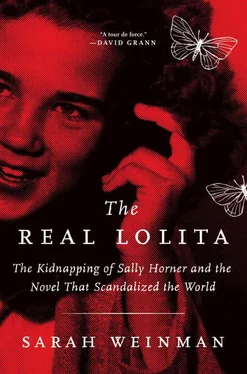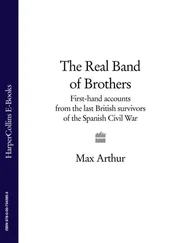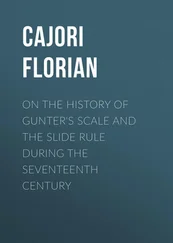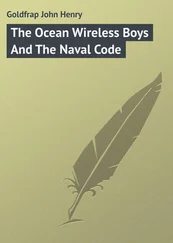The Gift (1938–1952, translated into English and published in 1963).
The Enchanter (written in 1939, published posthumously, translated and with a preface by Dmitri Nabokov, 1986).
Nikolai Gogol (1944).
Speak, Memory (1951, as Conclusive Evidence; revised edition published in 1966).
Lolita (1955).
Pnin (1957).
Pale Fire (1962).
The Annotated Lolita (edited with preface, introduction, and notes by Alfred Appel, Jr., 1970; revised and updated, 1991).
Strong Opinions (1973).
Lolita: A Screenplay (1973).
Lectures on Literature (edited by Fredson Bowers, introduction by John Updike, 1980).
Lectures on Russian Literature (edited and with an introduction by Fredson Bowers, 1981).
Vladimir Nabokov: Selected Letters, 1940–1977 (edited by Dmitri Nabokov and Matthew J. Bruccoli, 1989).
Dear Bunny, Dear Volodya: The Nabokov-Wilson Letters, 1940–1971 (edited by Simon Karlinsky, 1979; reprinted 2001).
Letters to Véra (edited and translated by Olga Voronina and Brian Boyd, 2015).
WORKS BY OTHERS ON NABOKOV
Alfred Appel, Jr., and Charles Newman, Nabokov: Criticism, Reminiscences, Translations, and Tributes . Northwestern University Press, 1970.
Alex Beam, The Feud: Vladimir Nabokov, Edmund Wilson, and the End of a Beautiful Friendship . Pantheon, 2016.
Brian Boyd, Vladimir Nabokov: The Russian Years . Princeton University Press, 1990.
——, Vladimir Nabokov: The American Years . Princeton University Press, 1991.
——, Stalking Nabokov: Selected Essays . Oxford University Press, 2012.
Mikita Brottman, The Maximum Security Book Club . Harper, 2016.
Andrew Field, Nabokov: His Life in Art . Little, Brown, 1967.
——, Nabokov: His Life in Part . Viking, 1977.
——, VN: The Life and Art of Vladimir Nabokov . Crown, 1986.
John De St. Jorre, Venus Bound: The Erotic Voyage of the Olympia Press . Random House, 1994.
Michael Juliar, Vladimir Nabokov: A Descriptive Bibliography . Garland Publishing, 1986.
Michael Maar, The Two Lolitas . Verso, 2005.
——, Speak, Nabokov . Verso, 2010.
Azar Nafisi, Reading Lolita in Tehran . Random House, 2003.
Ellen Pifer, ed., Vladimir Nabokov’s Lolita: A Casebook . Oxford University Press, 2003.
Andrea Pitzer, The Secret History of Vladimir Nabokov . Pegasus, 2013.
Robert Roper, Nabokov in America . Bloomsbury USA, 2015.
Phyllis Roth, ed., Critical Essays on Vladimir Nabokov . G. K. Hall, 1984.
Stacy Schiff, Véra (Mrs. Vladimir Nabokov) . Random House, 1999.
Marianne Sinclair, Hollywood Lolita: The Nymphet Syndrome in the Movies . Plexus, 1988.
Russell Trainer, The Lolita Complex . Citadel, 1965.
Graham Vickers, Chasing Lolita: How Popular Culture Corrupted Nabokov’s Little Girl All Over Again . Chicago Review Press, 2008.
Michael Wood, The Magician’s Doubts: Nabokov and the Risks of Fiction . Princeton University Press, 1997.
Lila Azam Zanganeh, The Enchanter: Nabokov and Happiness . W. W. Norton, 2011.
ARTICLES AND WEBSITES
Anonymous (attributed to Joyce Haber), “The Lolita Case.” Time, vol. 72, no. 20, November 17, 1958.
Martin Amis, “Lo Hum and Little Lo.” The Independent, October 24, 1992.
Brian Boyd, “The Year of Lolita.” New York Times Book Review, September 8, 1991.
Robertson Davies, “Mania for Green Fruit.” Saturday Night, October 11, 1958.
Alexander Dolinin, “Whatever Happened to Sally Horner?: A Real Life Source of Nabokov’s Lolita.” Times Literary Supplement, pp. 11–12, September 9, 2005.
Leland de la Durantaye, “The Pattern of Cruelty and the Cruelty of Pattern in Vladimir Nabokov.” Cambridge Quarterly, October 2006.
——, “Lolita in Lolita, or the Garden, the Gate and the Critics.” Nabokov Studies 10 (2006).
Sarah Herbold, “(I Have Camouflaged Everything, My Love): Lolita and the Woman Reader.” Nabokov Studies 5 (1998–1999): 81–94.
Elizabeth Janeway, “The Tragedy of a Man Driven by Desire.” New York Times Book Review, August 17, 1958.
Landon Jones, “On the Trail of Nabokov in the American West.” New York Times, May 24, 2016, https://www.nytimes.com/2016/05/29/travel/vladimir-nabokov-lolita.html.
Erica Jong, “Lolita Turns Thirty: A New Introduction.” New York Times Book Review, June 5, 1988.
Vladimir Nabokov, “On a Book Entitled Lolita.” Anchor Review, 1957. (Reprinted in every English-language edition of Lolita since 1958.)
Heine Scholtens, “Seeing Lolita in Print.” Thesis for M.A. Programme in Book History, Leiden University, 2005 (uploaded in 2014).
Delia Ungureanu, “From Dulita to Lolita.” In From Paris to Tlön: Surrealism as World Literature . Bloomsbury Academic, 2017.
Dieter Zimmer, “Lolita, USA.” 2007. http://www.d-e-zimmer.de/LolitaUSA/LoUSpre.htm.
Dieter Zimmer and Jeff Edmunds, “Vladimir Nabokov: A Bibliography of Criticism.” 2005. http://www.libraries.psu.edu/nabokov/forians.htm.
OTHER SOURCES
Amanda Berry and Gina de Jesus, Hope: A Memoir of Survival in Cleveland . Viking, 2015.
Phil Cohen, “Local History—Camden, NJ.” http://www.dvrbs.com.
Jeffery M. Dorwart, Camden County, New Jersey: The Making of a Metropolitan Community, 1626–2000 . Rutgers University Press, 2001.
Jaycee Dugard, A Stolen Life . Simon & Schuster, 2011.
Howard Gillette, Jr., Camden After the Fall . University of Pennsylvania Press, 2005.
Michelle Knight, Finding Me: A Decade of Darkness, A Life Reclaimed . Weinstein Books, 2014.
Elizabeth Smart, My Story . St. Martin’s Press, 2013.
This book is based extensively on primary sources wherever available, including court documents and transcripts, prison records, legislative records, and testimony. I am grateful for the assistance of the New Jersey State Archives in Trenton, New Jersey; the Camden County Historical Society in Camden, New Jersey; the Maryland State Archives in Annapolis, Maryland; the Baltimore City Archives in Baltimore, Maryland; the City Archives and the Free Library of Philadelphia, Pennsylvania; Our Lady of Victory Center, Bishop Dunne Catholic School, and the Diocesan Archives in Dallas, Texas; and the National Archives offices in Leavenworth, Kansas; Philadelphia, Pennsylvania; and San Francisco, California.
When court documents were unavailable or lost, I relied on newspaper accounts, most notably the Camden Courier-Post and the Philadelphia Inquirer, which had the most comprehensive stories about Sally Horner’s abduction, rescue, and death between 1948 and 1952.
I conducted dozens of interviews for the book, including several conversations with Sally’s niece, Diana Chiemingo; one telephone conversation with Diana’s father, Al Panaro, in 2014; two telephone conversations with Carol Taylor, in 2016 and 2017; and two conversations with “Madeline La Salle,” in 2014. Other invaluable sources with firsthand memories of principal characters included “Rachel Janisch” and “Vanessa Janisch”; Fred Cohen and Peggy Braveman; Tom Pfeil; and Emma DiRenzo.
For the Nabokov sections, I relied on files, clippings, note cards, and letters deposited at the Library of Congress as well as at the Berg Collection, New York Public Library. Grateful acknowledgment for permission to access the Berg Collection is given to the Wylie Agency, on behalf of the Nabokov Estate, and to Isaac Gewirtz, Lyndsi Barnes, Joshua McKeon, and Mary Catherine Kinniburgh for their assistance and advice.
Читать дальше












